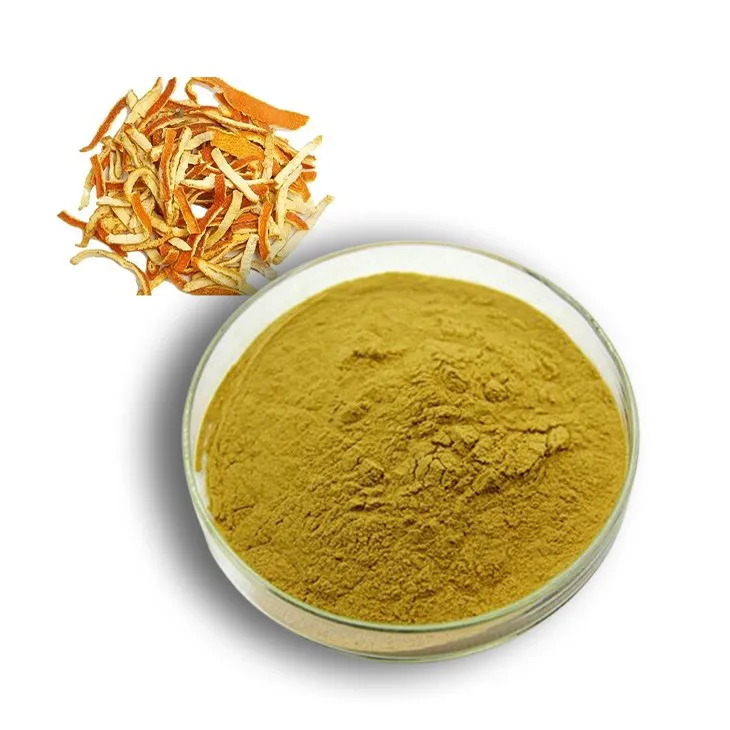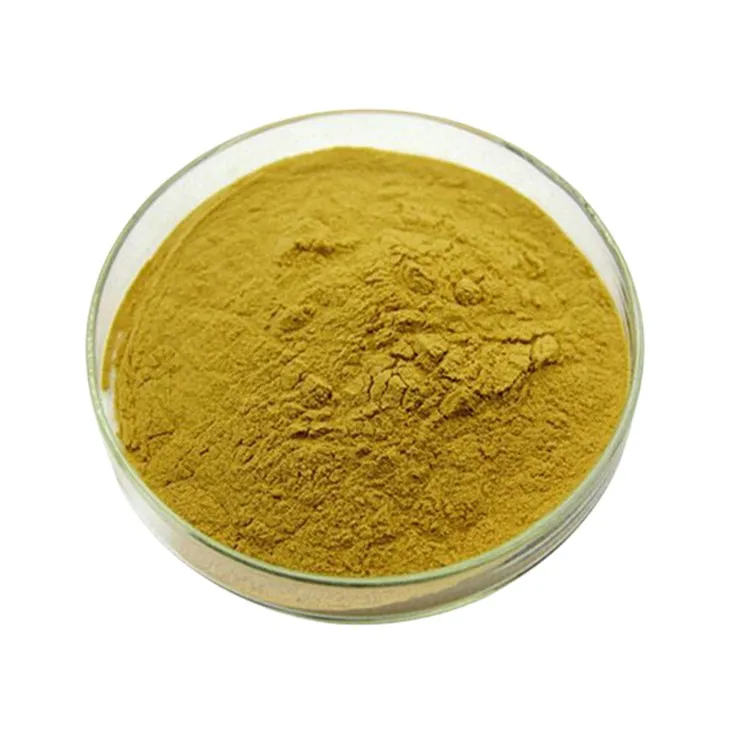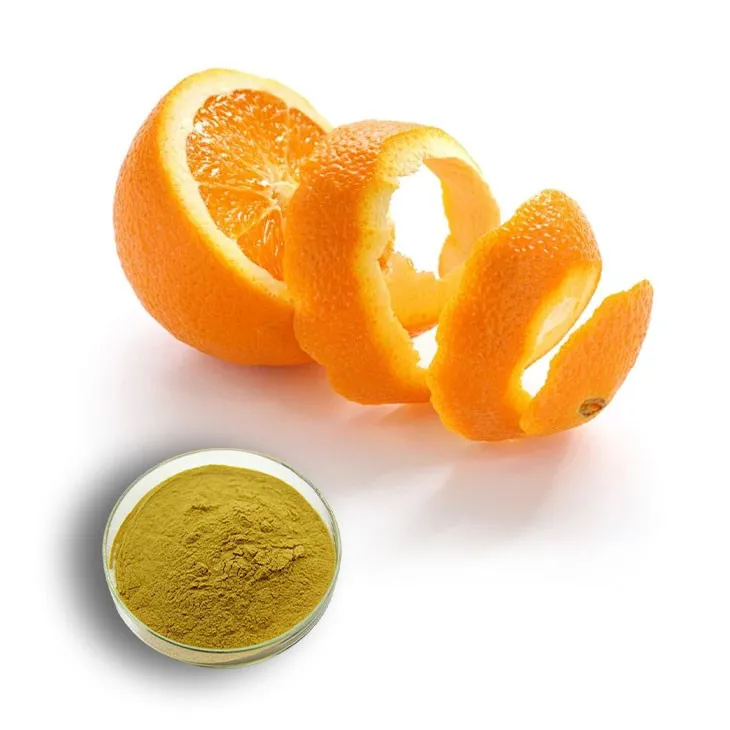- 0086-571-85302990
- sales@greenskybio.com
The Optimal Method for Extracting Hesperidin.
2024-11-29

1. Introduction
Hesperidin is a flavanone glycoside that is widely present in citrus fruits and has numerous health - promoting properties. Due to its potential applications in the pharmaceutical, food, and cosmetic industries, the efficient extraction of Hesperidin has become an important research topic. However, different extraction methods vary in terms of cost - effectiveness, environmental impact, and product purity. This article aims to comprehensively analyze various extraction methods and determine the ultimate extraction solution for Hesperidin.

2. Traditional Extraction Methods
2.1 Solvent Extraction
Solvent extraction is one of the most common methods for hesperidin extraction. It involves using organic solvents such as ethanol, methanol, or acetone to dissolve hesperidin from plant materials. The process typically includes the following steps:
- Sample preparation: The citrus peel or other plant materials containing hesperidin are dried, ground, and sieved to obtain a fine powder.
- Solvent addition: The powdered sample is mixed with the selected solvent in a suitable ratio, usually under agitation or reflux conditions to enhance the extraction efficiency.
- Filtration: After a certain extraction time, the mixture is filtered to separate the solid residue from the solvent - containing hesperidin solution.
- Concentration and purification: The filtrate is then concentrated to remove the solvent, and further purification steps such as chromatography may be employed to obtain high - purity hesperidin.
Advantages of solvent extraction include relatively high extraction efficiency and wide applicability to different plant materials. However, it also has several drawbacks. The use of organic solvents can be costly, and some solvents may be toxic and harmful to the environment. Moreover, the purification process to remove solvent residues can be complex and time - consuming.
2.2 Acid - Base Extraction
Acid - base extraction is based on the chemical properties of hesperidin. In this method, plant materials are first treated with an acid solution to hydrolyze hesperidin glycosides, converting them into aglycones. Then, an alkaline solution is used to adjust the pH to precipitate hesperidin. The main steps are as follows:
- Acid hydrolysis: The citrus peel powder is soaked in an acid solution (such as hydrochloric acid) at a certain temperature and time to break the glycosidic bonds in hesperidin.
- Alkaline precipitation: After acid hydrolysis, the solution is neutralized with an alkaline solution (such as sodium hydroxide) until hesperidin precipitates out. The precipitate is then collected by filtration.
- Washing and drying: The collected precipitate is washed with water or a suitable solvent to remove impurities, and then dried to obtain hesperidin.
The advantage of acid - base extraction is that it can simplify the extraction process to a certain extent. However, the use of strong acids and alkalis can cause corrosion of equipment and may also lead to partial degradation of hesperidin, affecting product purity.

3. Modern Extraction Technologies
3.1 Supercritical Fluid Extraction (SFE)
Supercritical fluid extraction has emerged as a promising technique for hesperidin extraction. Supercritical carbon dioxide (sc - CO₂) is most commonly used as the supercritical fluid. The process operates under specific temperature and pressure conditions where carbon dioxide exhibits both liquid - like solubility and gas - like diffusivity. The main steps are:
- Preparation of plant material: Similar to other methods, the citrus peel is dried, ground, and sieved.
- Extraction: The powdered sample is placed in the extraction vessel, and supercritical CO₂ is passed through the sample at a controlled temperature and pressure. Hesperidin is dissolved in the supercritical fluid.
- Separation: The supercritical fluid containing hesperidin is then passed through a separator where the pressure is reduced, causing the carbon dioxide to return to the gaseous state and the hesperidin to be collected.
Advantages of SFE include being environmentally friendly as carbon dioxide is non - toxic and recyclable, high extraction selectivity, and the ability to produce high - purity hesperidin. However, the equipment for SFE is expensive, and the operation requires strict control of temperature and pressure conditions.
3.2 Ultrasonic - Assisted Extraction (UAE)
Ultrasonic - assisted extraction utilizes ultrasonic waves to enhance the extraction process. Ultrasonic waves create cavitation bubbles in the solvent, which collapse and generate high - intensity shock waves and micro - jets. These physical effects can disrupt the cell walls of plant materials, facilitating the release of hesperidin into the solvent. The general steps are:
- Sample preparation: The citrus peel is processed as in other methods.
- Ultrasonic treatment: The sample is placed in a solvent, and ultrasonic waves are applied for a certain period. The frequency, power, and treatment time of the ultrasonic waves can be adjusted according to the specific requirements.
- Filtration and purification: After ultrasonic treatment, the mixture is filtered, and the filtrate is further purified to obtain hesperidin.
UAE has the advantages of being simple, fast, and energy - efficient. It can significantly reduce the extraction time compared to traditional solvent extraction methods. However, the extraction efficiency may not be as high as that of some other advanced methods, and the ultrasonic equipment also has certain requirements.
3.3 Microwave - Assisted Extraction (MAE)
Microwave - assisted extraction makes use of microwave radiation to heat the solvent and plant materials. Microwave energy can be selectively absorbed by polar molecules in the sample, leading to rapid heating and enhanced mass transfer. The extraction steps are as follows:
- Sample preparation: The citrus peel is prepared as usual.
- Microwave treatment: The sample - solvent mixture is placed in a microwave - capable vessel and exposed to microwave radiation for a specific time and power level. During this process, hesperidin is extracted into the solvent.
- Filtration and purification: Similar to other methods, the mixture is filtered and the filtrate is purified to obtain the final product.
MAE has the advantages of high extraction efficiency, short extraction time, and energy - saving. However, improper microwave treatment may cause over - heating and degradation of hesperidin, and the equipment also needs to be carefully calibrated.

4. Comparison of Different Extraction Methods
4.1 Cost - effectiveness
- Solvent extraction: The cost of solvents, especially some high - purity organic solvents, can be relatively high. Additionally, the cost of subsequent purification steps to remove solvent residues also adds to the overall cost.
- Acid - base extraction: The cost of acids and alkalis used is relatively low, but the equipment maintenance cost due to corrosion may increase the overall cost in the long run.
- Supercritical Fluid Extraction: The initial investment in equipment for SFE is very high, which makes it less cost - effective in small - scale operations. However, in large - scale production, the recyclability of carbon dioxide can reduce the cost to a certain extent.
- Ultrasonic - Assisted Extraction: The cost of ultrasonic equipment is moderate, and the overall cost is mainly determined by the cost of solvents and the scale of operation. It is relatively cost - effective for medium - scale extractions.
- Microwave - Assisted Extraction: The cost of microwave equipment is also a factor, but considering its high extraction efficiency and short extraction time, it can be cost - effective in appropriate production scales.
4.2 Environmental Impact
- Solvent extraction: The use of organic solvents may pose environmental risks if not properly disposed of. Some solvents are volatile organic compounds (VOCs) that can contribute to air pollution.
- Acid - base extraction: The waste acid and alkali solutions need to be properly treated to avoid environmental pollution. However, the overall environmental impact is relatively small compared to solvent extraction if the treatment is carried out correctly.
- Supercritical Fluid Extraction: As supercritical CO₂ is non - toxic and recyclable, it has the least environmental impact among these methods.
- Ultrasonic - Assisted Extraction: The environmental impact mainly depends on the type of solvent used. If water - based solvents are used, the environmental impact can be minimized.
- Microwave - Assisted Extraction: Similar to ultrasonic - assisted extraction, the environmental impact is related to the solvent, and proper handling of waste solvents is required.
4.3 Product Purity
- Solvent extraction: Although high - purity hesperidin can be obtained through further purification steps, solvent residues may still be a concern, which can affect product purity.
- Acid - base extraction: The acid - base treatment may cause partial degradation of hesperidin, which can reduce product purity to a certain extent.
- Supercritical Fluid Extraction: It can produce high - purity hesperidin with relatively few impurities due to its high selectivity.
- Ultrasonic - Assisted Extraction: The purity of the product obtained by UAE is relatively good, but it may not be as high as that of SFE in some cases.
- Microwave - Assisted Extraction: If the microwave treatment is properly controlled, high - purity hesperidin can be obtained, but over - heating may lead to purity reduction.

5. Conclusion
Each extraction method for hesperidin has its own advantages and disadvantages in terms of cost - effectiveness, environmental impact, and product purity. Supercritical Fluid Extraction (SFE) stands out as the most environmentally friendly method and can produce high - purity hesperidin. However, its high equipment cost limits its application in small - scale extractions. For small - scale and medium - scale operations, Ultrasonic - Assisted Extraction (UAE) and Microwave - Assisted Extraction (MAE) are relatively cost - effective and can also obtain relatively high - purity products. Acid - base extraction is a simple method but has some limitations in terms of product purity. Solvent extraction is a traditional method with relatively high cost and environmental concerns. Overall, the choice of the optimal extraction method should be based on the specific production scale, cost requirements, and environmental regulations. In large - scale industrial production, if cost is not the primary concern, SFE may be the best choice. For smaller - scale operations, UAE or MAE can be considered to balance cost and product quality.
FAQ:
What are the common extraction methods for hesperidin?
Common extraction methods for hesperidin include solvent extraction, such as using ethanol or methanol as solvents. There is also ultrasonic - assisted extraction which can enhance the extraction efficiency. Another method is microwave - assisted extraction which utilizes microwave energy to speed up the extraction process.
How does cost - effectiveness play a role in hesperidin extraction methods?
The cost - effectiveness of an extraction method depends on various factors. For example, solvent extraction may be cost - effective if the solvent is inexpensive and can be recycled. However, some advanced methods like supercritical fluid extraction may have higher initial setup costs but can offer higher yields in the long run, thus affecting the overall cost - effectiveness. It also depends on the scale of production. Small - scale production may not be able to afford high - tech extraction methods due to cost limitations.
What is the impact of different extraction methods on environmental protection?
Solvent extraction methods may have environmental impacts if the solvents are toxic and not properly disposed of. For example, some organic solvents can be volatile and contribute to air pollution. On the other hand, methods like enzymatic extraction are considered more environmentally friendly as they use enzymes which are biodegradable. Supercritical fluid extraction can also be relatively environmentally friendly as it often uses carbon dioxide as the supercritical fluid, which is non - toxic and easily recyclable.
How can product purity be ensured during hesperidin extraction?
To ensure product purity during hesperidin extraction, multiple purification steps can be involved. After the initial extraction, techniques such as chromatography (e.g., high - performance liquid chromatography) can be used to separate hesperidin from other impurities. Filtration and crystallization are also common methods to purify the extracted hesperidin. Additionally, careful control of the extraction conditions, such as temperature, pH, and extraction time, can help to increase the purity of the final product.
Are there any emerging extraction technologies for hesperidin?
Yes, there are emerging extraction technologies. For example, ionic liquid - based extraction is being studied. Ionic liquids have unique properties that can potentially improve the extraction efficiency and selectivity of hesperidin. Another emerging area is the use of deep eutectic solvents, which are considered more environmentally friendly alternatives to traditional organic solvents and may offer new possibilities for hesperidin extraction.
Related literature
- Optimization of Hesperidin Extraction from Citrus Peel by Response Surface Methodology"
- "Comparative Study of Different Extraction Methods for Hesperidin from Orange Peel"
- "Green Extraction of Hesperidin: A Review of Current and Future Trends"
- ▶ Hesperidin
- ▶ Citrus Bioflavonoids
- ▶ Plant Extract
- ▶ lycopene
- ▶ Diosmin
- ▶ Grape seed extract
- ▶ Sea buckthorn Juice Powder
- ▶ Fruit Juice Powder
- ▶ Hops Extract
- ▶ Artichoke Extract
- ▶ Mushroom extract
- ▶ Astaxanthin
- ▶ Green Tea Extract
- ▶ Curcumin
- ▶ Horse Chestnut Extract
- ▶ Other Product
- ▶ Boswellia Serrata Extract
- ▶ Resveratrol
- ▶ Marigold Extract
- ▶ Grape Leaf Extract
- ▶ New Product
- ▶ Aminolevulinic acid
- ▶ Cranberry Extract
- ▶ Red Yeast Rice
- ▶ Red Wine Extract
-
Hericium erinaceus extract powder
2024-11-29
-
Peppermint Oil
2024-11-29
-
Green Tea Extract
2024-11-29
-
Angelica sinensis extract
2024-11-29
-
Alfalfa Meal
2024-11-29
-
Moringa powder
2024-11-29
-
Beta Carotene
2024-11-29
-
Kidney Bean Extract
2024-11-29
-
Eucommia Ulmoides Extract
2024-11-29
-
Alisma Extract
2024-11-29





















